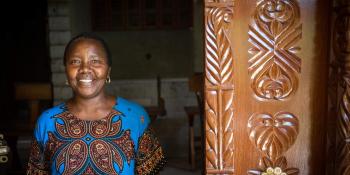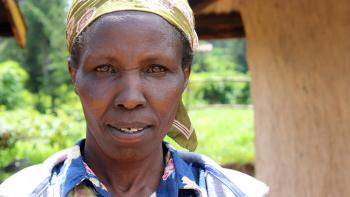Building resilience and a future one loan at a time
Nditty Kyengo stands on the roof terrace of her soon to be completed magnificent new home in the hills above Machakos. Gazing proudly over her farm, from the cows in the pen to the greenhouses where fleshy purple capsicums ripen, the Kenyan considers the transformation she has made over the last two decades.
Thanks to the financial support of KWFT (Kenya Women Microfinance Bank Limited), coupled with the technical expertise of Habitat for Humanity’s Terwilliger Center for Innovation in Shelter (TCIS) in partnership with The MasterCard Foundation, Nditty is almost finished constructing her dream home. Running her fingers through her short hair, she reflects on where it all started.
“I took out my first loan of about $50, 21 years ago,” she said. “I set up a hair salon, and bought dryers, rollers and chemicals. The business took off from there.”
The 40 year-old secured her first loan as well as subsequent investments from KWFT, a bank set up 35 years ago. KWFT now proudly claims to have a presence in all but two of Kenya’s 47 counties.
I took out my first loan of about $50, 21 years ago to set up a hair salon. The business took off from there.— Nditty
KWFT’s General Manager of Research and Product Development, Veronicah Karoki, cites Nditty as an example of how KWFT is changing lives across Kenya. The bank has a successful track record of turning impoverished housewives and mothers into financially secure, confident businesswomen who take out loans for housing, energy, technology and their children’s education.
“KWFT doesn’t mean it’s for women only,” stated Veronicah, “but we target the family through women.”
KWFT’s loans have certainly had an impact on Nditty’s family. A few years after taking out her initial business loan, Nditty moved to Akatheka, a village near Machakos, to support her husband’s work. Turning again to KWFT, Nditty took out a loan worth 50,000 Kenyan shillings ($500) to purchase a cow. Within a year, the cow had produced a calf and Nditty began to sell milk. Today, she is the proud owner of a herd of 12 cows.
But this was only the start.
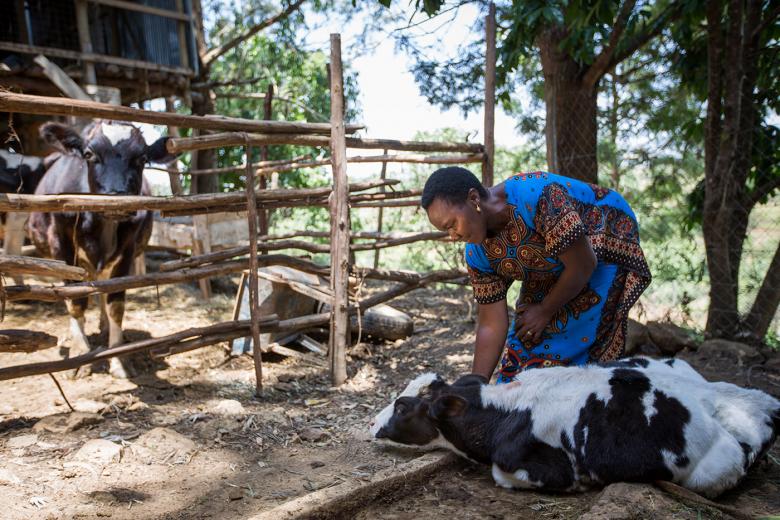
“The best thing I ever did with KWFT’s support,” she beamed, “was to learn about greenhouse farming. It is something every farmer should emulate.”
Against her greenhouse’s white walls, she cuts a colourful figure in her bright blue dress, moving between the green capsicum plants with their red and purple peppers. “By controlling the growing conditions,” commented Nditty, “I’m able to control what I produce and when it will ripen. That also means I can control my cash flow and profits.
“KWFT had confidence in me and their support over the two decades ago made the difference,” she said. “I remember when I got that first 5,000 Kenya shilling ($50) loan. We were really down. We did not have anything. They believed in me and helped me to get to where I am now.”
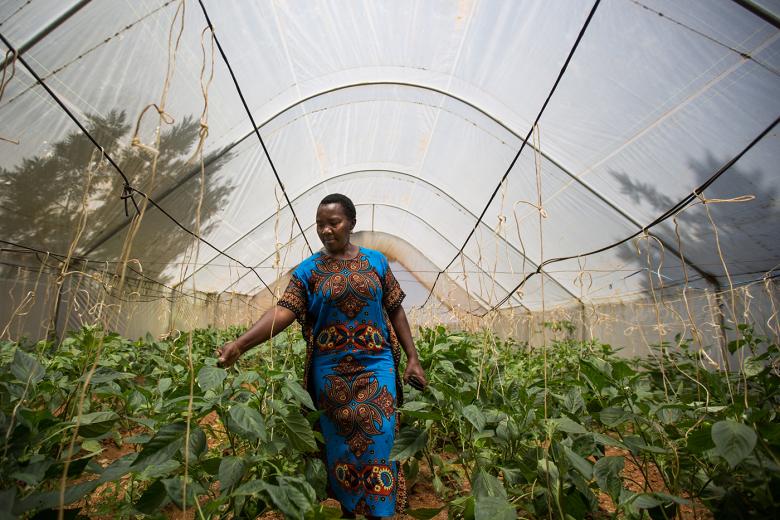
Today, she’s building a new home with the help of KWFT and Habitat for Humanity. It’s all part of a program supported by The MasterCard Foundation expand access to housing microfinance in the region by developing scalable housing microfinance products. Veronicah sees real value in the partnership. “Habitat provides much-needed technical assistance in developing loan products for low-cost housing schemes,” she said.
Habitat, in partnership with The MasterCard Foundation, is helping banks develop financial products and services and build the capacity of financial institutions in the development of appropriate housing loans like the one taken out by Nditty. Habitat’s support includes conducting market research to ensure the loan structure is appropriate, and offering practical housing support to KWFT’s clients to empower them to make the best use of their resources in solving their shelter needs. This support takes the form of shelter design advice, financial literacy training, help gaining access to quality suppliers and qualified contractors.
“We don’t handle clients ourselves,” said Habitat’s Microfinance Manager, George Mugweru, “but we provide information on how to construct a home, find the best mason and evaluate the impact of a loan after construction is finished.”
It is KWFT’s incredible reach into rural communities that appeals to Habitat for Humanity.
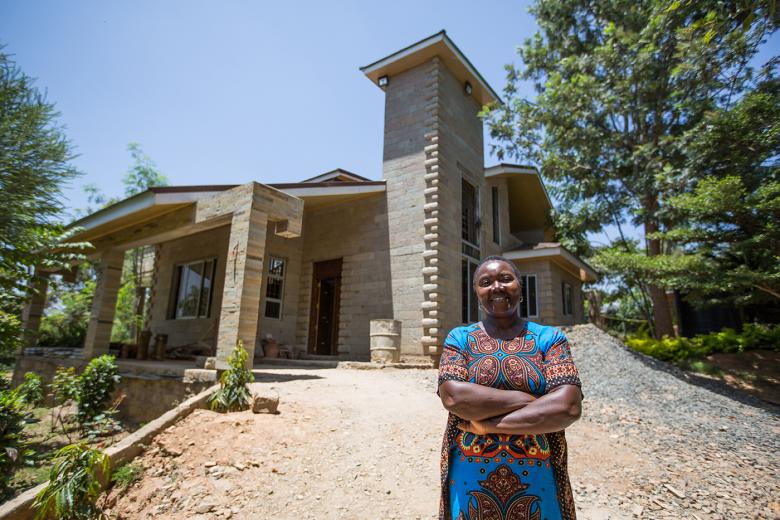
“KWFT can serve rural people that we want to target, and provide loans to build homes, which is also our goal,” said George. “Thanks to The MasterCard Foundation we can now help develop solutions that support this effort while adding to our housing expertise.”
KWFT, which changed its name to Kenya Women Microfinance Bank Limited in 2014, has more than 800,000 customers across Kenya. 80% of whom are based in rural areas. That means the bank also supports the country’s agriculture sector. So, while access to financial support trickles down to entire communities, KWFT is keen to ensure that women are the direct recipients.
As Veronicah explains, a KWFT priority is to shift the financial sector’s bias towards women. “Before we started, banking required a title deed, a logbook or pay slip. Women didn’t normally have these. Our role was to bridge the gap so that women could be included.”
Nonetheless, Nditty is quick to emphasise her husband’s continued backing. “He has been supportive ever since I took out my first loan. He has been with me all the time. We both want to continue working with Kenya Women and achieve more.”
The Kenyan is full of praise for KWFT, without whom none of this would have been possible. “When you need a loan,” Nditty commented, “they are always willing to listen. When you need help on how to implement your project, they are there to offer advice. KWFT is always there for you.”
Nditty’s future plans are characteristically ambitious. Once she has completed her new home, she will turn her attention to her latest venture: a flour-grinding mill, which she hopes will produce enough profit to put the local children through school.
Nditty is also now a shareholder in KWFT and uses the company’s mobile banking technology. She recently secured a 1,500,000 Kenya shilling loan ($150,000) to build her impressive two-story house. That’s a long way from loans for a hair dryer and a cow.
